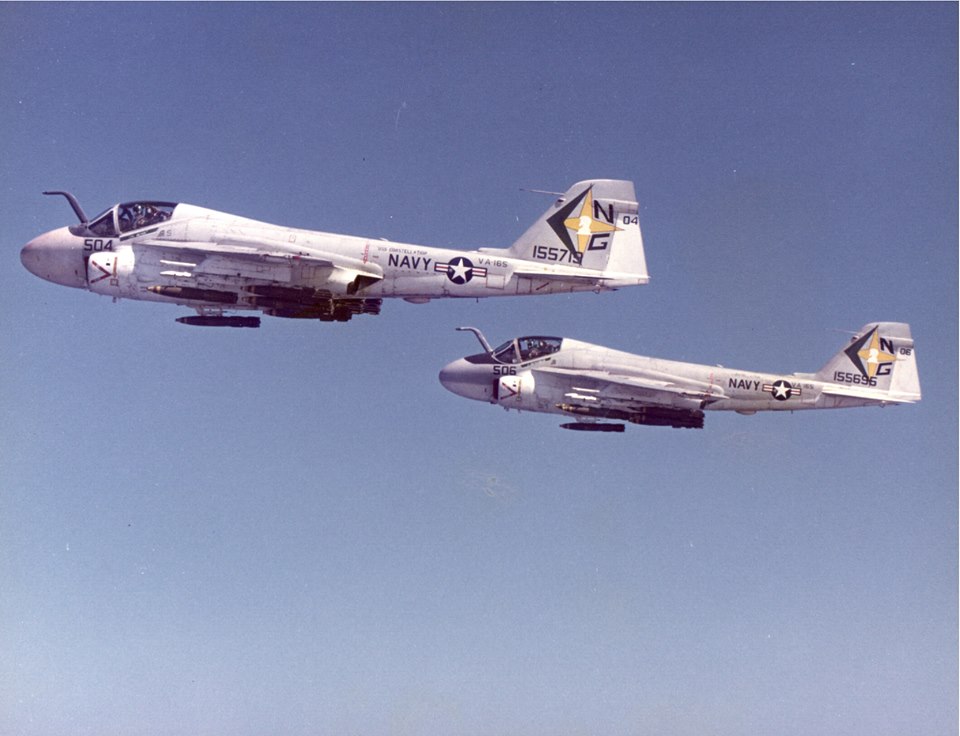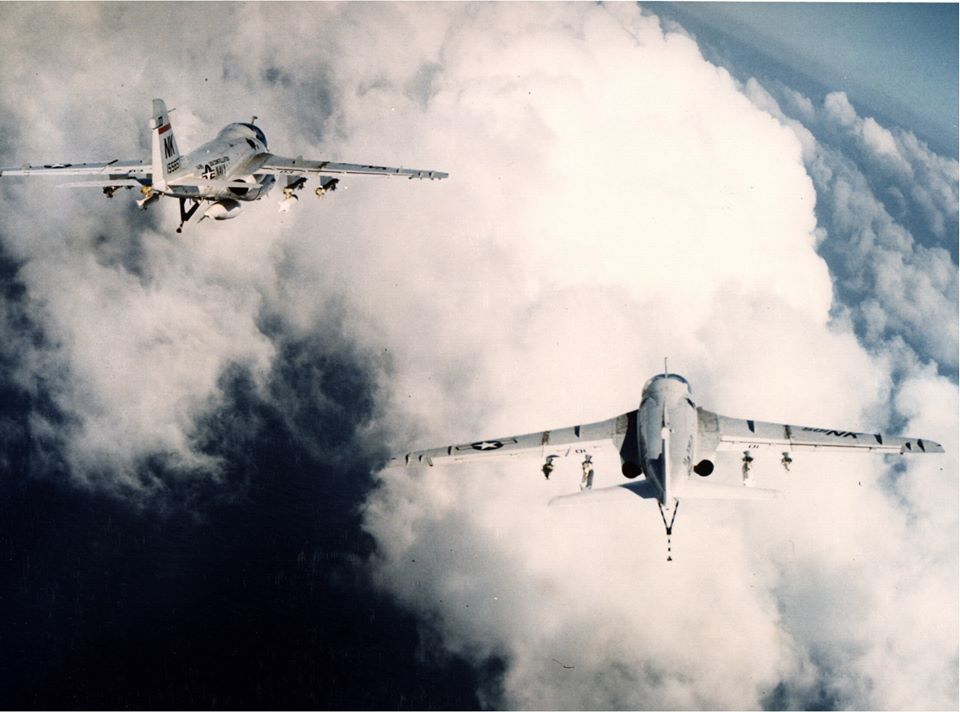Sheets started to jink, making it difficult for the MiG-17 pilot to keep the A-6 in his sights while attempting to draw the MiG down the coast in an effort to run it out of fuel
The Grumman A-6 was developed as a carrier-based attack aircraft to replace the Douglas Skyraider. It stood apart from every other U.S. Navy aircraft thanks to a unique crew arrangement that placed the pilot and bombardier/navigator (BN) side by side to increase mission effectiveness. With improved crew communication, the Intruder became one of the best assault aircraft of the Vietnam War.

The “Iron Hand” mission, officially known as Suppression of Enemy Air Defenses (SEAD), which required the Intruder to attack and destroy SAMs (Surface to Air Missiles) and AAA (Anti Aircraft Artillery), was one of many carried out by the A-6 and required good crew cooperation. In these types of sorties, Intruder pilots had to rely on both their own proficiency with low-altitude flying and the sight of their BNs in order to dodge SAMs.
“You could outfly the SAMs with the A-6,” explains the former A-6 pilot (retired) Rear Admiral Rupe Owens in Rafael Lima’s article Legends of Vietnam: Shoulder to Shoulder The Grumman A-6 was ugly, but it sure could cook; published on Air & Space magazine.com “What you did was make hard turns. At their intercept speed of about Mach 3, the SAMs couldn’t turn with the A-6, especially at a low level.” Owens, who has flown almost every version of the Intruder, remembers approaching a target when several SAMs pointed towards its aircraft, streaming long, bright tails of flame, five in all. “We managed to out-turn them all, but I remember the sound of those five rocket motors from the SAMs as they went by. It got loud. Real loud.”
The Digital Integrated Attack and Navigation Equipment system, or DIANE, which combined an innovative tool that could take into account any angle of climb or dive, speed, G force, and wind with an analog computer to calculate when dropping a payload accurately, allowed the Intruder to demonstrate that it had a true all-weather capability. According to Lima, while Intruders were attacking various objectives, A-7 Corsairs and F-4 Phantoms were flying in formation and releasing their bombs as the A-6 crews instructed using DIANE.
The A-6s attacked moving targets that crossed the Ho Chi Minh Trail and other supply routes with the assistance of Forward Air Controllers (FACs). To complete this mission, the A-6s used specialized equipment like an Airborne Moving Target Indicator, a special doppler radar that collected returns from moving ground objects, as well as ground-based seismic and acoustic sensors that were airdropped along supply trails.
In order to give the Intruders’ crews the opportunity to carry out a second strike by dropping Mk 82s, these sorties were carried out by first dropping Rockeye cluster bombs to destroy vehicles’ gas tanks or ammunition caches. If the secondary fires were insufficient, they then moved on to preplanned secondary targets. According to Marine Corps Bruce Byrum (now a retired general), another Vietnam veteran who logged more than 3,000 hours as an A-6 pilot, these flights might be extremely terrifying and the A-6 could end up being the ideal target for AAA. Byrum detailed this possibility to Lima.
“Sometimes at night, the enemy anti-aircraft fire used colored tracer rounds fired aimlessly into the night sky when aircraft were detected flying in the area, to warn all vehicles on the road that we were there.”
However, the night strike against pre-designated targets was the most frequent mission carried out by the Intruders throughout the Vietnam War. Sometimes these missions were carried out in broad daylight, as was the case in May 1972 when a flight of four A-6s carrying Mk 20 Rockeye bomblet canisters proceeded toward the enemy airstrip of Bai Thuong. Roger Sheets, a Navy pilot, and air group commander piloted the lead Intruder. He directed the flight to Bai Thuong with the aid of the radar and visual indications provided by his BN Charlie Carr, a Marine Corps captain. “The A-6 was the all-weather attack aircraft,” says Carr to Lima “Monsoon season never affected our operations.”

However, because it was a bright day, Sheets and Carr could see North Vietnam clearly, and any other aircraft in the area could as well, including the enemy MiGs that Carr noticed as the Intruders climbed to 200 feet and approached their objective. However, Sheets armed the more than three tons of ordnance carried by its Intruder while the MiGs were 1,500 feet in the air.
“We came in underneath this wheel of MiGs,” Carr says, “maybe 12, 15 of them. We were hoping to catch them on the ground and bomb the hell out of ’em.” Despite the fact that the airbase had been informed, Sheets kept the A-6 level and straight. A little while later, he thumbed the release on the stick to release all 12 Mk 20s over the airstrip before turning the Intruder hard to the left.
But now the Intruders had another problem. “Now the MiG-17 was on our tail,” Carr says. Even though Sheets had no chance of positioning himself to fire given the A-6’s slower speed, Carr chose to arm the aircraft’s Sidewinder missiles. Instead, he started jinking, making it difficult for the MiG pilot to keep them in his sights while attempting to drive the MiG down the coast in an effort to run it out of fuel.
Carr recollects seeing smoke rising from the MiG’s 37-mm cannon before an F-4 finally showed up like a big brother arriving late to a fight. Sheets and Carr managed to return to the USS Coral Sea (CV-43) after the Phantom launched a missile, which caused the MiG to burst into flames. This story makes it clear that MiGs were one of the reasons A-6 crews chose the safety of darkness or bad weather.

No matter the hour, A-6 aircrew were able to fly low and quickly thanks to the usage of the terrain-following radar. However, as Carr says, only approximately a quarter of his trips from the Coral Sea were at night due to the complexity of carrier operations. “But missions from land,” he concludes, “were almost all at night.”
Photo by U.S. Navy and U.S. Marine Corps

